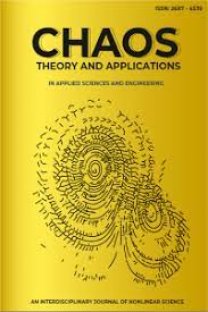Ocular Artifact Removal Method Based on the Wavelet and ICA Transform
Ocular Artifact Removal Method Based on the Wavelet and ICA Transform
Electroencephalography, Electrooculogram, Independent Component Analysis Brain Computer Interface, Wavelet transform,
___
- Akhtar, M. T., W. Mitsuhashi, and C. J. James, 2012 Employing spatially constrained ica and wavelet denoising, for automatic removal of artifacts from multichannel eeg data. Signal processing 92: 401–416.
- Behera, S. K., 2009 Fast ICA for Blind Source Separation and Its Implementation. Ph.D. thesis.
- Bell, A. J. and T. J. Sejnowski, 1995 An information-maximization approach to blind separation and blind deconvolution. Neural computation 7: 1129–1159.
- Çınar, S. and N. Acır, 2017 A novel system for automatic removal of ocular artefacts in eeg by using outlier detection methods and independent component analysis. Expert Systems with Applications 68: 36–44.
- Ghandeharion, H. and A. Erfanian, 2010 A fully automatic ocular artifact suppression from eeg data using higher order statistics: Improved performance by wavelet analysis. Medical engineering & physics 32: 720–729.
- He, Z., Y. Zi, X. Chen, and X.Wang, 2007 Transform principle of inner product for fault diagnosis. Journal of vibration engineering 20: 528–533.
- Hyvärinen, A. and E. Oja, 2000 Independent component analysis: algorithms and applications. Neural networks 13: 411–430.
- Islam, M. K., A. Rastegarnia, and Z. Yang, 2016 Methods for artifact detection and removal from scalp eeg: A review. Neurophysiologie Clinique/Clinical Neurophysiology 46: 287–305.
- Jafarifarmand, A., M.-A. Badamchizadeh, S. Khanmohammadi, M. A. Nazari, and B. M. Tazehkand, 2017 Real-time ocular artifacts removal of eeg data using a hybrid ica-anc approach. Biomedical signal Processing and control 31: 199–210.
- James, C. J. and C.W. Hesse, 2004 Independent component analysis for biomedical signals. Physiological measurement 26: R15.
- Judith, A. M., S. B. Priya, and R. K. Mahendran, 2022 Artifact removal from eeg signals using regenerative multi-dimensional singular value decomposition and independent component analysis. Biomedical Signal Processing and Control 74: 103452.
- Jung, T.-P., S. Makeig, C. Humphries, T.-W. Lee, M. J. Mckeown, et al., 2000 Removing electroencephalographic artifacts by blind source separation. Psychophysiology 37: 163–178.
- Kelly, J. W., D. P. Siewiorek, A. Smailagic, J. L. Collinger, D. J. Weber, et al., 2010 Fully automated reduction of ocular artifacts in high-dimensional neural data. IEEE Transactions on Biomedical Engineering 58: 598–606.
- Kirkove, M., C. François, and J. Verly, 2014 Comparative evaluation of existing and new methods for correcting ocular artifacts in electroencephalographic recordings. Signal Processing 98: 102– 120.
- Krishnaswamy, P., G. Bonmassar, C. Poulsen, E. T. Pierce, P. L. Purdon, et al., 2016 Reference-free removal of eeg-fmri ballistocardiogram artifacts with harmonic regression. Neuroimage 128: 398–412.
- Langlois, D., S. Chartier, and D. Gosselin, 2010 An introduction to independent component analysis: Infomax and fastica algorithms. Tutorials in Quantitative Methods for Psychology 6: 31–38.
- Liu, J., S.-l. Liu, M. Medhat, and A. Elsayed, 2023 Wavelet transform theory: The mathematical principles of wavelet transform in gamma spectroscopy. Radiation Physics and Chemistry 203: 110592.
- Mammone, N., F. La Foresta, and F. C. Morabito, 2011 Automatic artifact rejection from multichannel scalp eeg by wavelet ica. IEEE Sensors Journal 12: 533–542.
- McMenamin, B.W., A. J. Shackman, L. L. Greischar, and R. J. Davidson, 2011 Electromyogenic artifacts and electroencephalographic inferences revisited. NeuroImage 54: 4–9.
- Nguyen, H.-A. T., J. Musson, F. Li, W. Wang, G. Zhang, et al., 2012 Eog artifact removal using a wavelet neural network. Neurocomputing 97: 374–389.
- Nguyen, T., T. Nguyen, K. Truong, and T. Van Vo, 2013 A mean threshold algorithm for human eye blinking detection using eeg. In 4th international conference on biomedical engineering in Vietnam, pp. 275–279, Springer.
- Romero, S., M. Mañanas, and M. J. Barbanoj, 2009 Ocular reduction in eeg signals based on adaptive filtering, regression and blind source separation. Annals of biomedical engineering 37: 176– 191.
- Romero, S., M. A. Mañanas, and M. J. Barbanoj, 2008 A comparative study of automatic techniques for ocular artifact reduction in spontaneous eeg signals based on clinical target variables: a simulation case. Computers in biology and medicine 38: 348– 360.
- Sahonero-Alvarez, G. and H. Calderon, 2017 A comparison of sobi, fastica, jade and infomax algorithms. In Proceedings of the 8th International Multi-Conference on Complexity, Informatics and Cybernetics, pp. 17–22.
- Sameni, R. and C. Gouy-Pailler, 2014 An iterative subspace denoising algorithm for removing electroencephalogram ocular artifacts. Journal of neuroscience methods 225: 97–105.
- Stone, J. V., 2002 Independent component analysis: an introduction. Trends in cognitive sciences 6: 59–64.
- Vigario, R. and E. Oja, 2008 Bss and ica in neuroinformatics: from current practices to open challenges. IEEE reviews in biomedical engineering 1: 50–61.
- Wolpaw, J. R., G. E. Loeb, B. Z. Allison, E. Donchin, O. F. do Nascimento, et al., 2006 Bci meeting 2005-workshop on signals and recording methods. IEEE Transactions on neural systems and rehabilitation engineering 14: 138–141.
- Yang, B.-h., L.-f. He, L. Lin, and Q. Wang, 2015 Fast removal of ocular artifacts from electroencephalogram signals using spatial constraint independent component analysis based recursive least squares in brain-computer interface. Frontiers of Information Technology & Electronic Engineering 16: 486–496.
- Yayın Aralığı: 3
- Başlangıç: 2019
- Yayıncı: AKİF AKGÜL
The Modeling of the Rucklidge Chaotic System with Artificial Neural Networks
Zeynep KELEŞ, Güray SONUGÜR, Murat ALÇIN
Ocular Artifact Removal Method Based on the Wavelet and ICA Transform
David GARNER, Shouyan WANG, Ashley RAGHU, Vitor VALENTİ, Tipu AZİZ, Alexander GREEN
Hüseyin Serdar YALÇINKAYA, Nizamettin BAŞARAN
Design of a New Chaotic System with Sine Function: Dynamic Analysis and Offset Boosting Control
Dynamical Analysis and Electronic Circuit Implementation of Fractional-order Chen System
Bifurcation Analysis and 0-1 Chaos Test of a Discrete T System
Prediction of Gender and Age Period from Periorbital Region with VGG16
Ömer Faruk AKMEŞE, Hüseyin ÇİZMECİ, Selim ÖZDEM, Fikri ÖZDEMİR, Emre DENİZ, Rabia MAZMAN, Murat ERDOĞAN, Esma ERDOĞAN
